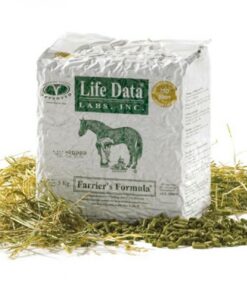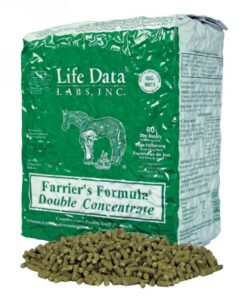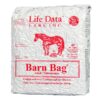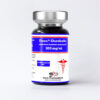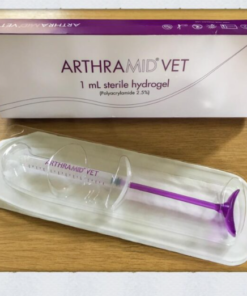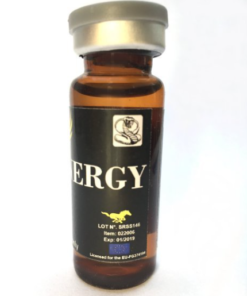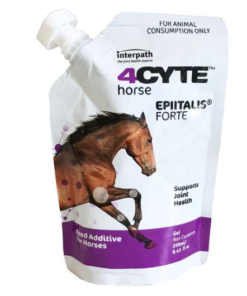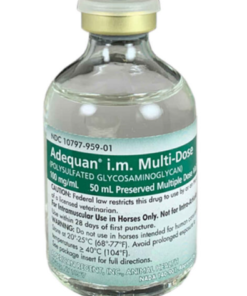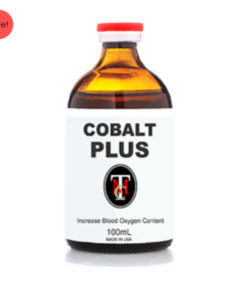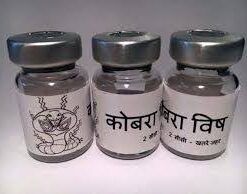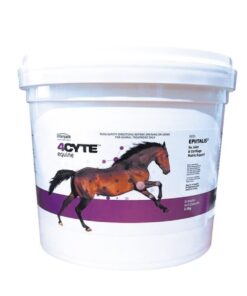Farriers Formula Original 10kg
$180.00 Original price was: $180.00.$155.00Current price is: $155.00.
Until 1979, when Dr. Frank Gravelee developed and launched Farriers Formula, the importance of horse nutrition for the growth and quality of its hooves was not known. The introduction of the concept of “feed for the hoof” opened up a completely new field of horse nutrition.
Farrier’s Formula was developed to provide the horse with the nutrients it needs to form strong structural and tightly connected connective tissue proteins (tendons, ligaments, bones, joints). From the beginning, Farrier’s Formula® also contained other nutrients such as phospholipids and polyunsaturated fatty acids, which have only recently been recognized by other suppliers as important “helpers” in the formation of healthy skin tissue.
American farriers have recommended Farrier’s Formula® as the first choice supplement for 12 consecutive years. For them, it is the “gold standard” against which similar products must be measured. Products from other manufacturers that claim to be directly comparable should be viewed with skepticism. Farrier’s Formula® is the first product of its kind to be developed on the basis of conclusive scientific research and described as effective in recognized, reputable scientific publications
The development of Farriers Formula
As the first supplementary feed of its kind, Farriers Formula is based on the scientific analysis of blood laboratory values from hundreds of horses. Each of these samples was tested for more than 175 different factors and the results were stored in a computer-aided database. With this data, Dr. Gravlee was able to use statistical data analysis methods to determine which nutrients the horses with poor hoof quality were lacking in order to determine the optimal amount and composition of nutrients to supplement. Giving individual nutrients is not helpful. Instead, all necessary nutrients must be given in a balanced ratio. With the knowledge of the missing nutrients and their composition, Dr. Gravlee was able to produce the supplementary food Farrier’s Formula to improve hoof quality and growth.
How Farriers Formula works
Farriers Formula provides the horse with all the nutrients it needs to form strong connective tissue proteins. Connective tissue proteins form the microscopic framework of all mammalian bodies and provide the shape and strength of all important organs and tissues. At 40% of all the body’s own proteins, connective tissue proteins are by far the most common proteins.
Connective tissue proteins are the building blocks of tissue fibers and their cross-linking with neighboring fibers. The strength of the connected fibers depends on the number of cross-links. Their formation is extremely complex for the body from a metabolic point of view. If the right nutrients are lacking, fewer cross-links are formed; the tissue that is to be formed or restored becomes weaker.
The horse’s hoof consists of connective tissue, the strength and elasticity of which depends on the number of cross-links. The formation of a healthy hoof is therefore directly dependent on the animal’s needs-based nutrition.
Positive results of feeding with Farriers Formula
Experience has shown that a shinier coat with more intense colors can be seen after just two weeks of feeding. After nine to ten weeks, improvements in the horn quality in the coronary band area can be seen as a horn band that is clearly distinguishable from the old hoof horn with the naked eye. The improvements inside the hoof are more difficult to see, but just as noticeable.
The length of time it takes to administer Farriers Formula depends on which problem was originally intended to be solved. If the health and appearance of the horse’s skin and coat are the main concerns, feeding should be continued for one to two months. If the goal is to grow a long, flowing and healthy mane and tail, feeding should be continued until the mane and tail have reached the desired length. The time required for complete renewal of the hoof wall, sole and frog is around 9-12 months. Therefore, supplementary feeding should be continued until the hoof is completely regenerated, although the improvement in hoof quality is already visible after two months.
Once the desired effect has been achieved, supplementary feeding can be reduced by half to maintain this condition permanently. However, each horse can react slightly differently. Thoroughbred and warmblood horses may possibly require permanent supplementary feeding. Arabians and Arabian crosses sometimes get by with half a measuring cup per day. Maintaining supplementary feeding according to needs is crucial for the health of the hoof.
If the expected effects have not been seen after 8-10 weeks of feeding Farriers Formula this could indicate that other factors besides nutrition are at play, such as genetics, environmental and husbandry issues. In such cases, Life Data Labs should be contacted immediately so that the problems can be resolved in a timely manner in collaboration with our nutritionists.
Satisfied customers from all over the world report that feed conversion has improved by up to 25% after giving Farriers Formula. It can be assumed that this effect is due to the improved breakdown and digestion of the feed through the nutrients in Farriers Formula.
Farriers Formula and the older horse
Feeding an older horse with Farriers Formula is beneficial even if the animal does not have any hoof problems. In older horses, a decrease in chewing intensity often becomes a problem because this impairs the ability of the digestive tract to absorb nutrients. In addition, the connective tissue of the skin, hoof, bones, tendons and muscles are no longer as strong and healthy as in younger horses. In addition, the metabolism and with it the activity of the animal usually slows down due to the lower hormone levels of the thyroid gland (thryoxine).
Farriers Formula addresses these problems by helping to improve the quality of the feed provided and the utilization of feed through more intensive digestion (digestive enzymes in the yeast culture). In addition, it strengthens aging and weakening connective tissue by providing the nutrients that ensure the formation of strong and healthy collagen. For many aging horses, whose activity decreases due to lower thyroid hormone levels, Farriers Formula provides iodine and the important amino acid tyrosine, which are necessary for the formation of the thyroid hormone thyroxine.
Supplements and genetics
Genetics determine the physical and chemical characteristics of the horse, including its hooves. But only with appropriate nutrition and care can the horse’s genes optimally fulfill their respective purpose and form the best possible hoof. The horse inherits the size, thickness and diameter of the hoof wall and sole. It also inherits the way in which nutrients are absorbed and utilized. This makes it clear why horses, under otherwise identical feeding and housing conditions, have different hoof qualities. Farriers Formula can be fed to horses for as long as necessary without any concerns.
Life Data Labs recommends using Life Data Hoof Disinfectant™ and The Right Step at the same time as feeding Farriers Formula to ensure complete hoof care and prevent hoof infections such as thrush and white line diseases.
Nutritional information on Farriers Formula
Packaging under a nitrogen atmosphere reduces oxidation damage.
The main cause of loss of quality and reduced shelf life of nutrients is oxidation. The pelleting process reduces the surface area of nutrients exposed to oxygen in the ambient air. Packaging under nitrogen prevents further oxygen uptake. This enables Life Data Labs to provide fresh products with an extended shelf life of nutrients.
Analysis
Crude protein 19.0%
Crude fat 8.0%
Crude fiber 17.0%
Ash 9.50%
Moisture 8%
Additives in Farriers Formula
DL-methionine – is a sulfur-containing amino acid that is lacking in most grains. It is important for the incorporation of lipids with sulfur bonds that increase the strength of connective tissue.
Vitamin C (ascorbic acid) – this supplement is generally considered unnecessary for horses. However, Life Data Labs studies have shown that the level of ascorbic acid in the blood of horses kept in stables or under stress is significantly reduced. These animals benefit from the supplementary feed because vitamin C is essential for healthy and strong connective tissue.
Copper – sulphate-containing proteins and enzymes cause a variety of metabolic processes in the body. Copper deficiency leads to a number of pathological symptoms, including structural and pigmentation defects in the hoof and hair.
Zinc oxide – is required for the healthy maturation of keratin, a main component of the outer layers of skin tissue. Keratin is important for wound healing, healthy skin condition and hoof growth.
Biotin – is a highly active vitamin from the vitamin B complex. It plays an important role in fatty acid metabolism.
Calcium iodide is an easily usable form of iodine, a component of the thyroid hormone. The thyroid controls basic metabolic processes. Its underactivity leads to a variety of symptoms, including inadequate hair coat and poor hoof quality.
Cobalt carbonate is important for the production of vitamin B12 by microorganisms in the horse’s gastrointestinal tract, as well as for the formation of red blood cells and healthy skin.
Additives
DL-methionine 3.15%
Biotin 117.5 mg/kg
Copper 545 mg/kg
Copper 1330 mg/kg
Cobalt 11.3 mg/kg
Iodine 4.8 mg/kg
Ingredients in Farriers Formula
Alfalfa meal is extremely palatable for horses. It has a high proportion of carotene, which is converted into vitamin A when needed.
Yeast cultures are a rich source of vitamin B, ensure optimal metabolism and a healthy dermis (skin, hair, hoof).
Lecithin contains phospholipids and omega fatty acids, which ensure the strength and flexibility of the connective tissue and are also important for moisture balance.
Soy protein concentrate is rich in amino acids, which are responsible for the formation of connective tissue components. It also provides the amino acid tyrosine, a component of the thyroid hormone and the neurotransmitter dopamine. Tyrosine is an extremely important amino acid and must therefore be provided in the diet. Life Data Labs studies in the years 1970-1980 demonstrated the relationship between the lack of this nutrient and hoof problems or obesity and subsequent diseases. Tyrosine is the natural means of regulating these syndromes and has contributed to the effectiveness of Farrier’s Formula® from the beginning.
Feeding instructions for Farriers Formula
Feeding with quality hay and grain. Farriers Formula is fed together with a balanced ration of good quality hay and grain, preferably without bran. The phosphorus content of bran can alter calcium absorption or lead to other imbalances in mineral supply.
Daily feeding amount for adult horses:
One measuring cup (237 ml) contains 170 g of Farrier’s Formula. For every 450 kg of body weight, feed the contents of one measuring cup daily.
Body weight Daily ration
225 kg half a measuring cup (85 g)
450 kg one measuring cup (170 g)
675 kg one and a half measuring cups (255 g)
900 kg two measuring cups (340 g)



